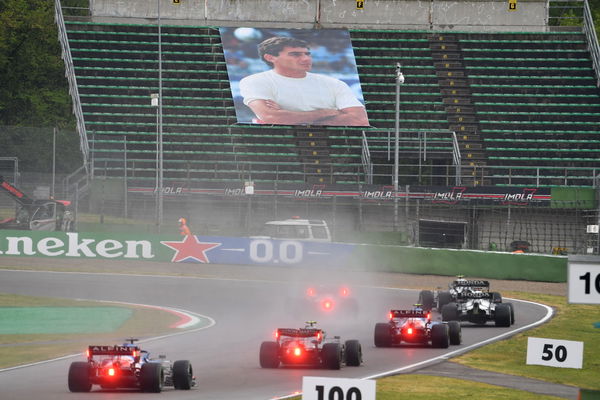
via Reuters
Formula One F1 – Emilia Romagna Grand Prix – Autodromo Enzo e Dino Ferrari, Imola, Italy – April 18, 2021 A picture of Ayrton Senna is seen in the stands during the race REUTERS/Jennifer Lorenzini

via Reuters
Formula One F1 – Emilia Romagna Grand Prix – Autodromo Enzo e Dino Ferrari, Imola, Italy – April 18, 2021 A picture of Ayrton Senna is seen in the stands during the race REUTERS/Jennifer Lorenzini
With reference to cars in general, two common terms that crop up are ABS and traction control. In layman’s terms, ABS stands for Anti-lock Braking System and its primary purpose is to stop cars from locking up while braking. Meanwhile, traction control allows a car to have more grip on the road, either in a stationary position while in motion. However, this does beg the question whether F1 has access to these systems.
The answer is that Formula One has actually banned both systems. This is because ABS and traction control are assists, which would not fully test a driver’s abilities behind the wheel. There is a need to challenge the driver because F1 has a reputation of being known as the pinnacle of motorsport. So, it would be counterproductive for the top motorsport series to provide driving aids to the drivers.
ADVERTISEMENT
Article continues below this ad
Why else does F1 not have these driver aids?
The recently concluded Emilia Romagna GP is definite proof that ABS and traction control is not needed. All 20 drivers showed considerable skill in the damp and soggy conditions, at least those who survived. However, this is what makes F1 the zenith of motorsport.

via Reuters
Formula One F1 – Emilia Romagna Grand Prix – Autodromo Enzo e Dino Ferrari, Imola, Italy – April 18, 2021 Mercedes’ Lewis Hamilton in action during the race REUTERS/Jennifer Lorenzini
Traction control was first introduced in 1990 because the cars were extremely difficult to drive. As a result, it banished the driver’s fear of losing car control, at least for a few seasons. Later on in 1994, the FIA decided to take away the training wheels and banned traction control. However, it didn’t last long, and it came back for the 2001 F1 season. The triumphant return only lasted until 2008, and drivers had to adapt to new driving abilities, especially in the rain.
Meanwhile, the ABS system received its own ban in the 1993 F1 season. Once again, the sole purpose was to shift the driver away from relying on technology and using their own skill. Even in 2021, both systems are still banned, mostly because they do little to enhance a driver’s natural ability.
READ MORE: WATCH: Detailed Video Shows How Traction Control Ban Has Changed an F1 Driver’s Approach
ADVERTISEMENT
ADVERTISEMENT
ADVERTISEMENT
ADVERTISEMENT

